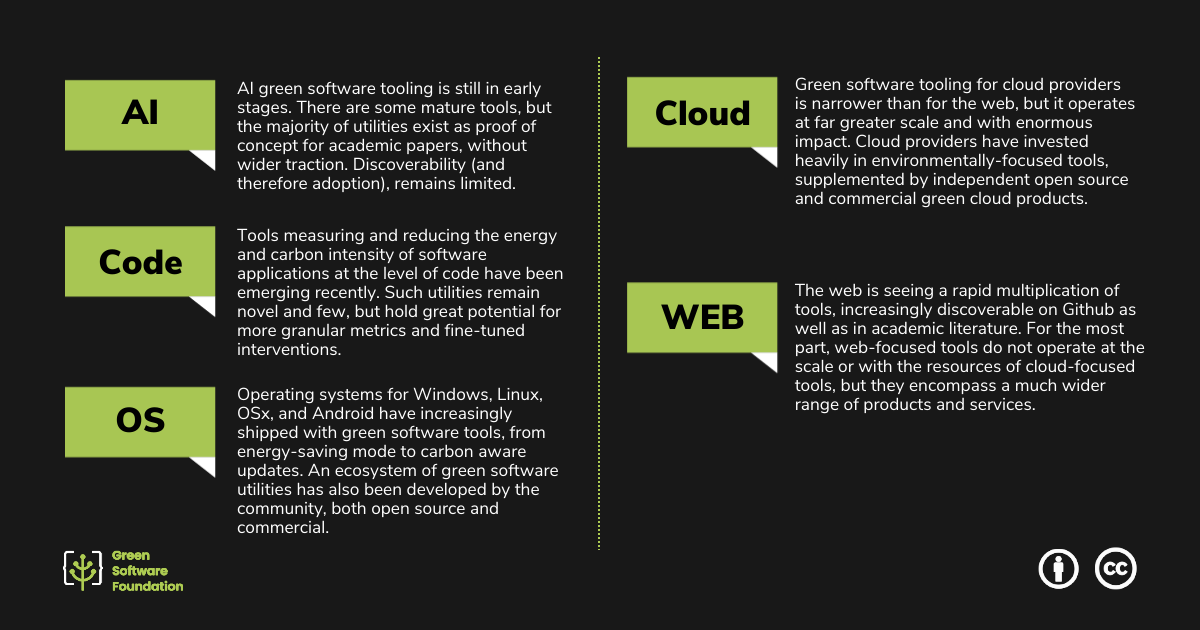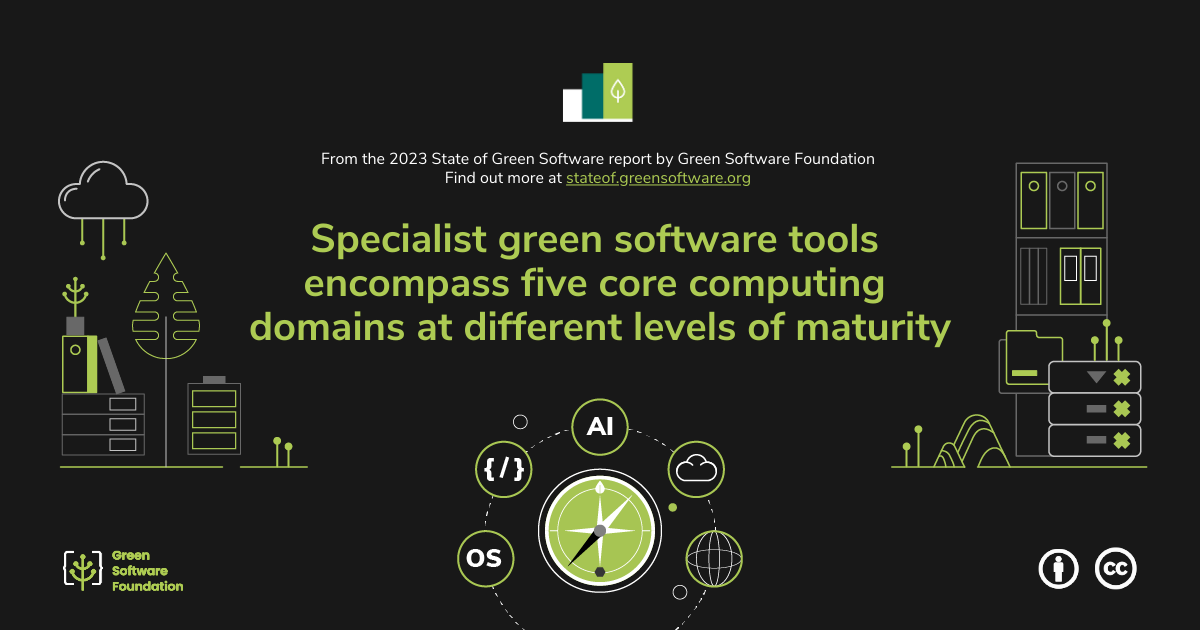Specialist green software tools encompass five core computing domains at different levels of maturity
There are five core domains of computing addressed by specialist green software tools, each at different levels of maturity. The core domains include AI, code, operating systems, cloud, and web.

-
AI: AI green software tooling is still in early stages. There are some mature tools, but the majority of utilities exist as proof of concept for academic papers, without wider traction. Discoverability (and therefore adoption), remains limited.
-
Code: Tools measuring and reducing the energy and carbon intensity of software applications at the level of code have been emerging recently. Such utilities remain novel and few, but hold great potential for more granular metrics and fine-tuned interventions.
-
OS: Operating systems for Windows, Linux, OSX, and Android have increasingly shipped with green software tools, from energy-saving mode to carbon aware updates. An ecosystem of green software utilities has also been developed by the community, both open source and commercial.
-
Cloud: Green software tooling for cloud providers is narrower than for the web, but it operates at far greater scale and with enormous impact. Cloud providers have invested heavily in environmentally-focused tools, supplemented by independent open source and commercial green cloud products.
-
Web: The web is seeing a rapid multiplication of tools, increasingly discoverable on Github as well as in academic literature. For the most part, web-focused tools do not operate at the scale or with the resources of cloud-focused tools, but they encompass a much wider range of products and services.
These domains are not mutually exclusive and software practitioners should use a combination to achieve the most accurate results and optimum impact on carbon emissions.
